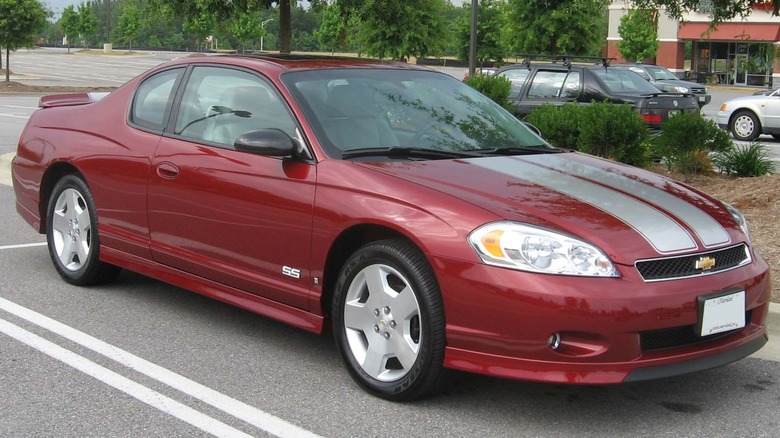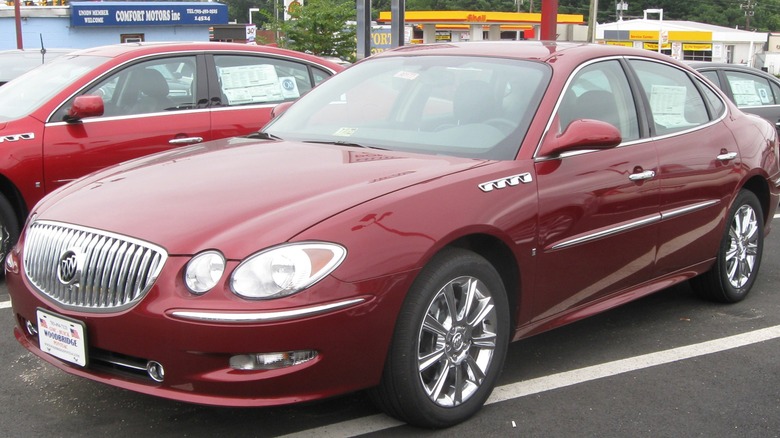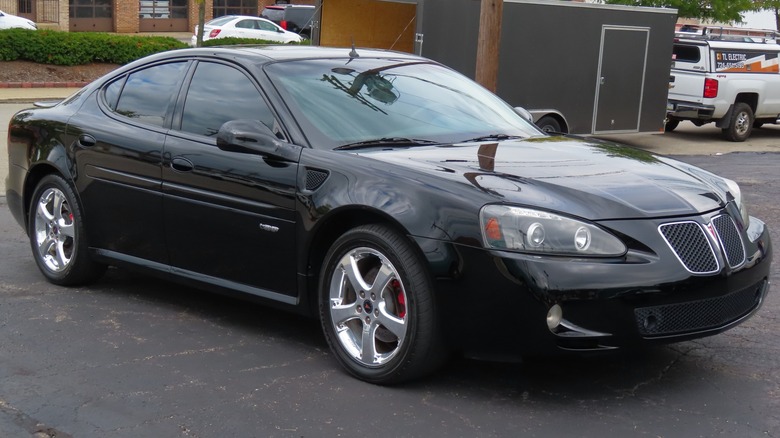Which Cars Have GM's LS4 Engine Under The Hood & How Much HP Does It Have?
Swapping an LS engine into a car is popular among folks inclined to do such things. It's a great way to gain the horsepower potential and reliability that makes the General Motors LS engines so special. However, even in a class as gifted as the LS lineup, one generation lands on the lowest rank.
General Motors introduced the 5.3-liter (325-cubic-inch) LS4 in 2005 to bring V8 power to its sporty front-wheel drive lineup. Like other LS engines, as a member of the fourth-generation small-block, it remained true to its roots with its pushrod valve train and 4.40-inch-on-center cylinder spacing.
The LS4's aluminum engine block featured 3.78-inch cylinders, and its cast iron crankshaft delivered 3.622 inches of stroke. Flat-top cast aluminum alloy pistons, attached to powdered metal I-beam connecting rods, compressed the air-fuel mixture into the aluminum cylinder heads' 65cc combustion chambers at a ratio of 10:1 to produce 303 horsepower and 323 lb-ft of torque.
The LS4 has the distinction of being General Motors' only transverse mounted small-block V8. Several modifications were made to accommodate the tight space, such as using a smaller intake manifold than other LS engines, mating the four-speed automatic transmission via a 60-degree Chevrolet V6 bellhousing, and mounting the starter on the transmission instead of the typical engine block location. It was also the first to use GM's Active Fuel Management, otherwise known as AFM and Displacement on Demand (DOD).
[Featured image by IFCAR via Wikimedia Commons | Cropped and scaled | CC Public Domain]
Which GM cars have an LS4 engine?
The Pontiac Grand Prix GXP was the first car to come equipped with the LS4. The Grand Prix GXP continued to feature the LS4 until Pontiac dropped the Grand Prix altogether in 2008 in favor of the rear-wheel drive 6.0-liter V8-powered Pontiac G8 GT.
Chevrolet adopted the LS4 for use in its Monte Carlo SS and Impala SS models in 2006, and Buick used it in the LaCrosse Super starting in 2008. The LS4 engine powered the last of the Monte Carlo SS models, with production of the model ending in 2007. Two years later, Chevrolet discontinued the SS version of the Impala, as Buick did with its LaCrosse Super trim.
Even if the Impala SS and LaCrosse Super models had stuck around, GM's decision to discontinue the LS4 would have resulted in an engine change anyway. The LS engine designation would remain in production use in other variations until 2015, powering GM cars like the Cadillac CTS-V, Chevy Camaro ZL1, and Corvette ZR1. You can even still buy new LS crate engines produced by Chevrolet.
[Featured image by IFCAR via Wikimedia Commons | Cropped and scaled | CC Public Domain]
Why does the LS4 get so little love?
Imagine being a Shetland Pony adopted by a family of thoroughbred race horses, sure, your family would love you, but some might question if you truly belonged at the same starting gate. The GM LS4 fits into the LS family much the same way, sure, it's got the LS name and similar architecture, but it comes up short in comparison with the rest of the family.
For starters, its use was dedicated exclusively to powering the largest of GM's front-wheel drive cars. Other LS engines powered rear-wheel drive varieties of modern-day muscle cars such as the Chevy Camaro, Pontiac GTO, Pontiac Firebird, and Chevrolet Corvette.
In addition, the production LS4 never made more than 303 horsepower. In its lowest form, the 1997 Gen-III LS1 made 305 horsepower, and even the Gen-IV LS2 provided 400 horses. While comparisons with the 638-horsepower 6.2-liter LS9 aren't fair, at least other low powered LS engines received names out of the spotlight, like the LM7.
GM's introduction of AFM on the LS4 was potentially another blow to the engine's reputation. While AFM helps GM achieve its CAFE requirements, many despise its existence to the point of searching out GM engines that don't have AFM systems. Love it or hate it, the LS4 was an innovative step in GM engine history. And the cars it powered were icons of luxury and performance for their time.
[Featured image by MercurySable99 via Wikimedia Commons | Cropped and scaled | CC BY-SA 4.0]


